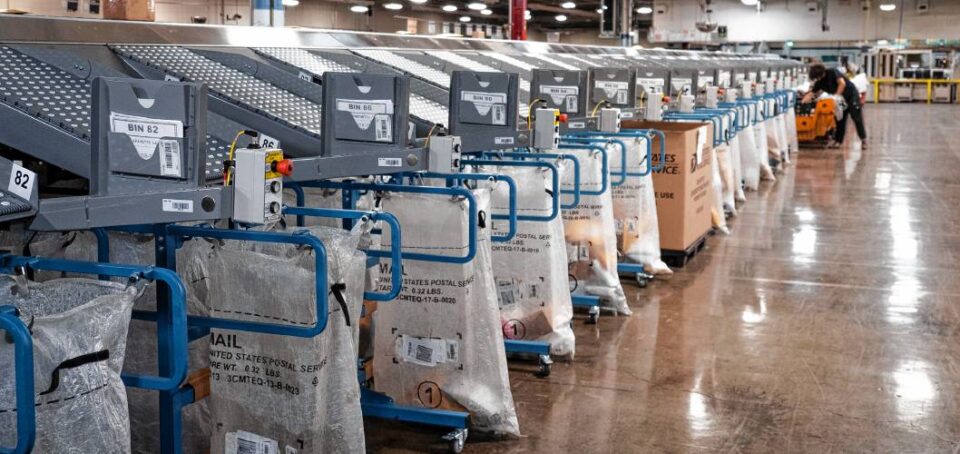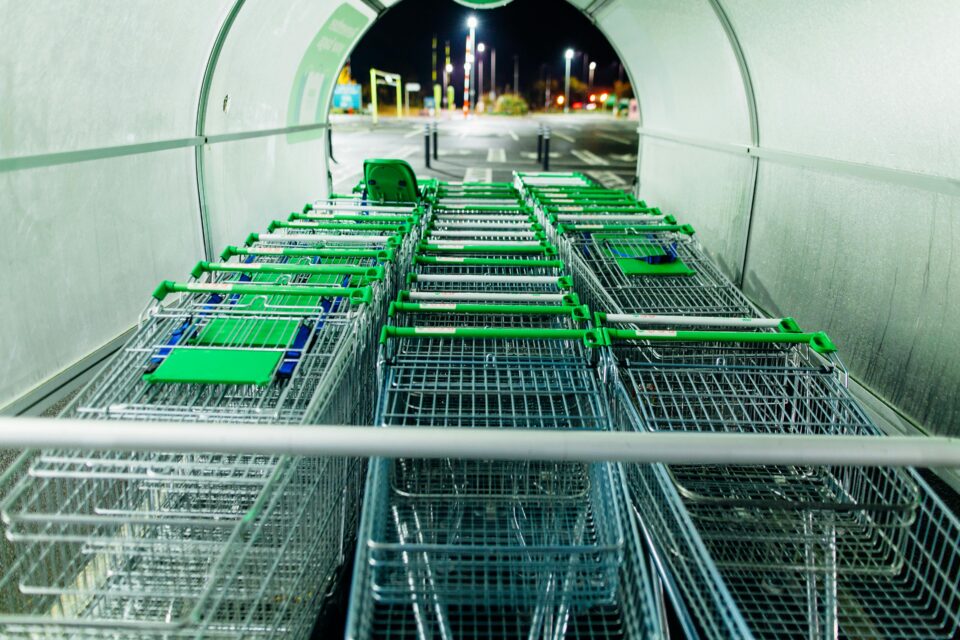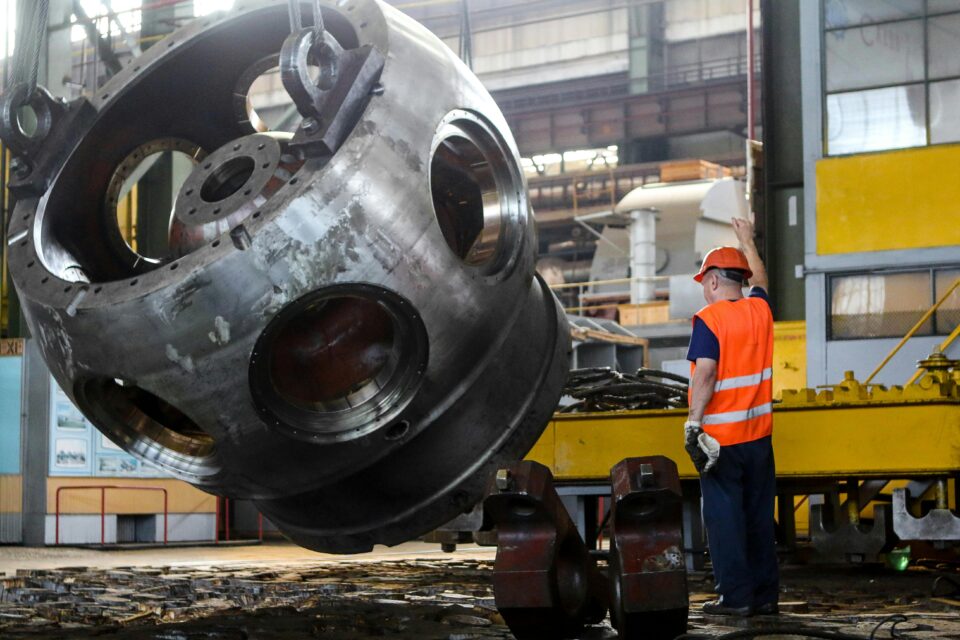The package sorter with attached shipment bags at the United States Postal Service distribution center in Manchester. GEOFF FORESTER photos
- Janie Beltran, senior plant manager for the United States Postal Service distribution center, looks down at one of the package sorter shipment bags last Wednesday evening.
Software-driven automation is all the rage in high tech manufacturing, but there’s a good argument to be made that the state’s oldest public service uses more of it than anywhere else in New Hampshire.
Consider the U.S. Postal Service Center next to Boston-Manchester Regional Airport, which just received a new package sorting machine that is several hundred feet long.
Depending on the time of year, between 150,000 and 930,000 letters, cards, bills and other pieces of mail arrive in this huge building every day, and that’s not including tens of thousands of packages and “flats” such as magazines.
The mail portion is poured into Barney, a giant machine painted purple (hence the nickname). Software reads each address – “You’d be surprised at some of the chicken scratch this picks up,” said Postal Service spokesman Steve Doherty – and then machines physically sort all those different-sized items at high speed so they can be sent to the appropriate location.
The sorter’s purpose is to take all the packages that have been brought to the center from throughout the state and sort them into the appropriate destination. Packages are loaded from various trolleys / carts and boxes at one end and travel several hundred feet on a conveyor. There are 100 bins on each side of the container for either a cardboard bulk box (often called a gaylord) that can hold 300 packages or a mesh bag that can hold 25 packages or so.
The automated system is so sophisticated that mail is sorted not just by town and post office and carrier route but into what is known as walk sequence, in which the mail in the front of the pile is delivered to the first stop on the carrier’s route, followed by mail at the second stop, then mail for the third stop and so on.
Aside from the software, which reads the address via the barcode and correlates that with the correct Zip code bag, the key technology is the conveyor. It carries the packages not on a fabric belt but on a series of rollers oriented perpendicular to the conveyor. When the software says the package is alongside the appropriate spot, whether it’s for Tallahassee or for Tamworth, the rollers spin and the package flies sideways into the bin or bag.
It’s an impressive sight, especially since the entire machine is the size of 10 school buses lined up, end to end. Making room for this huge device without expanding the building required moving a lot of existing machines and storage, says Beltran. “I think of it as a kind of feng shui, rearranging things to fit it in,” she joked.
Lurking behind all the Postal Service changes is, of course, the internet.
Letters, bills, invitations, circulars – these were once sent by the billions but now exist online, taking away a large part of the Postal Service’s workload and income. At the same time, online shopping has increased and boomed during the pandemic.
“It was growing slowly; then COVID hit,” said Doherty. “As we transition out (of the pandemic), you would think that might reverse, but so far there’s no sign of that.”
The task for the Postal Service is to replace declining mail with more of this package business in the face of established competitors like United Parcel Service and FedEx as well as the 800-pound gorilla in the online shopping room, Amazon. Part of that will be making use of the fact that only the Postal Service delivers to every address in the country – a requirement that can hinder flexibility and raise costs but also be a potential benefit.
Beltran, a 30-year Postal Service veteran, points to what happened when the government provided free pandemic test kits.
“Look what we did with COVID kits,” she said. More than 68 million test kit packages were sent out in all 50 states and, judging from coverage, it went off without any major hitches. We got up to speed in two weeks and got all that revenue. … That’s what we can do.”
Published: 9/24/2022 By DAVID BROOKS of the Monitor staff



